Hartley News Online Your alumni and supporter magazine
Founded in 1870 – and joining the University in 1996 – Winchester School of Art (WSA) is celebrating its 150th anniversary this year. Last edition, Southampton Connects looked at some of the School’s key moments and anniversary celebrations. In the second article commemorating this special occasion, we explore its complete history and notable alumni.
On 21 May 1870, a group of Winchester College Dons met to discuss the foundation of an art school in Winchester. They desired to replicate the successful ‘South Kensington system’: an art curriculum and framework devised by the Royal Academy Schools in London, which would later become the Royal Academy of Arts in 1896. The plan was simple: to put Winchester on the map for art education, and compete with the highly successful London institutions. Moving with great speed, the School of Art opened for autumn term on 27 September 1870, in a temporary location at the Bishop’s Palace in Winchester.
For the next few years, the School would build on its initial success, and begin to seek a permanent, purpose-built home. In 1873, Frederick Morshead, Housemaster at Winchester College and later Mayor of Winchester, wrote to the government’s Science and Art Department to request support in funding the building of an art school to adjoin the Winchester Guildhall. Correspondence held in the Hampshire County Archive confirms this was successful, and in 1875, the School received a building grant of £359, on condition that “the building should be used in perpetuity as a school of art”.
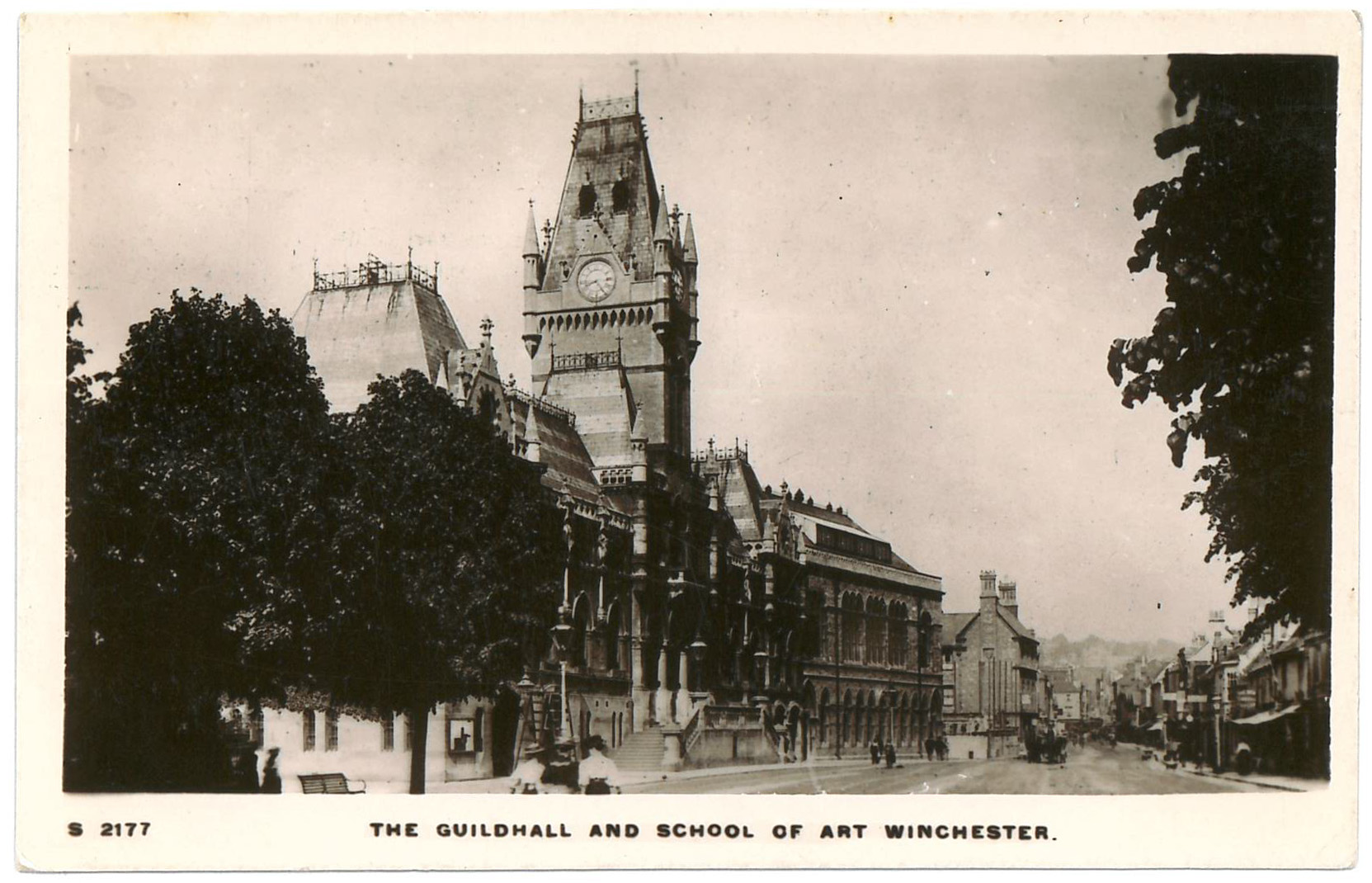
Postcard circa late 19th century, showing Winchester Guildhall and Winchester School of Art to the right of the clock tower
The new School of Art at the Guildhall was completed in 1876, and opened on 3 November in a ceremony led by Lord Northbrook, including a public dinner and celebration hosted by the mayor. Winchester School of Art would remain at the Guildhall for approximately 60 years, until it began to outgrow the space, and the evolving demands of creative industry and art education meant it required additional facilities. In the between-war years of the early 20th century, the School would use a number of additional different premises throughout the city, including sizable studios at the former Reference Library on North Walls (which are now private housing). These locations had initially planned to be temporary, but very suddenly became permanent with the outbreak of the Second World War, and the requisition of the Guildhall premises for the war effort.

WSA Prospectus 1910, the earliest held in our archive
The end of the Second World War saw the attention of local government and county officials return to the hunt for a new site for the School, and in 1947, the County Land Officer resumed the search. Several sites were discussed, including land on the very edge of the city boundary on Worthy Road. The use of the then-vacant Park Avenue site was suggested in response to this non-central location.
With Park Avenue approved for use as an art school, the design of the campus would be led by the County Architects and Harry Benson Ansell. Ansell had revolutionised educational construction in Hampshire using pre-fabricated systems from Europe, a style which would be adopted for construction of schools and colleges across the UK in the 1960s. Ansell would design a purpose-built, modern art school, with large studios and facilities to support graphic design, lithography and book binding, pottery, sculpture and kilns, photography and dark rooms, wallpapering, decorating, and cabinet making. It also included a large gallery and a specialist art and design library, to be housed in the now-iconic Rotunda building.
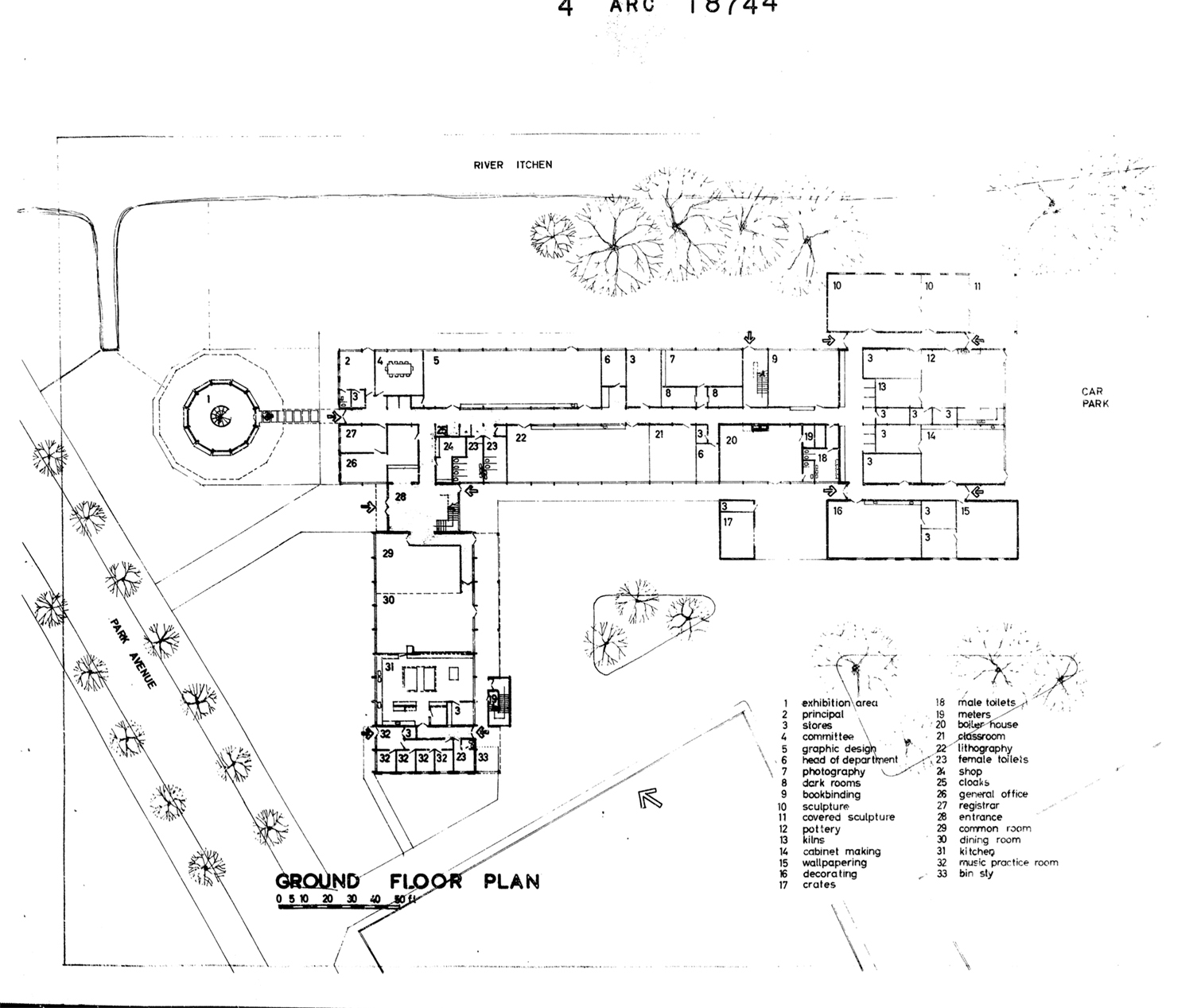
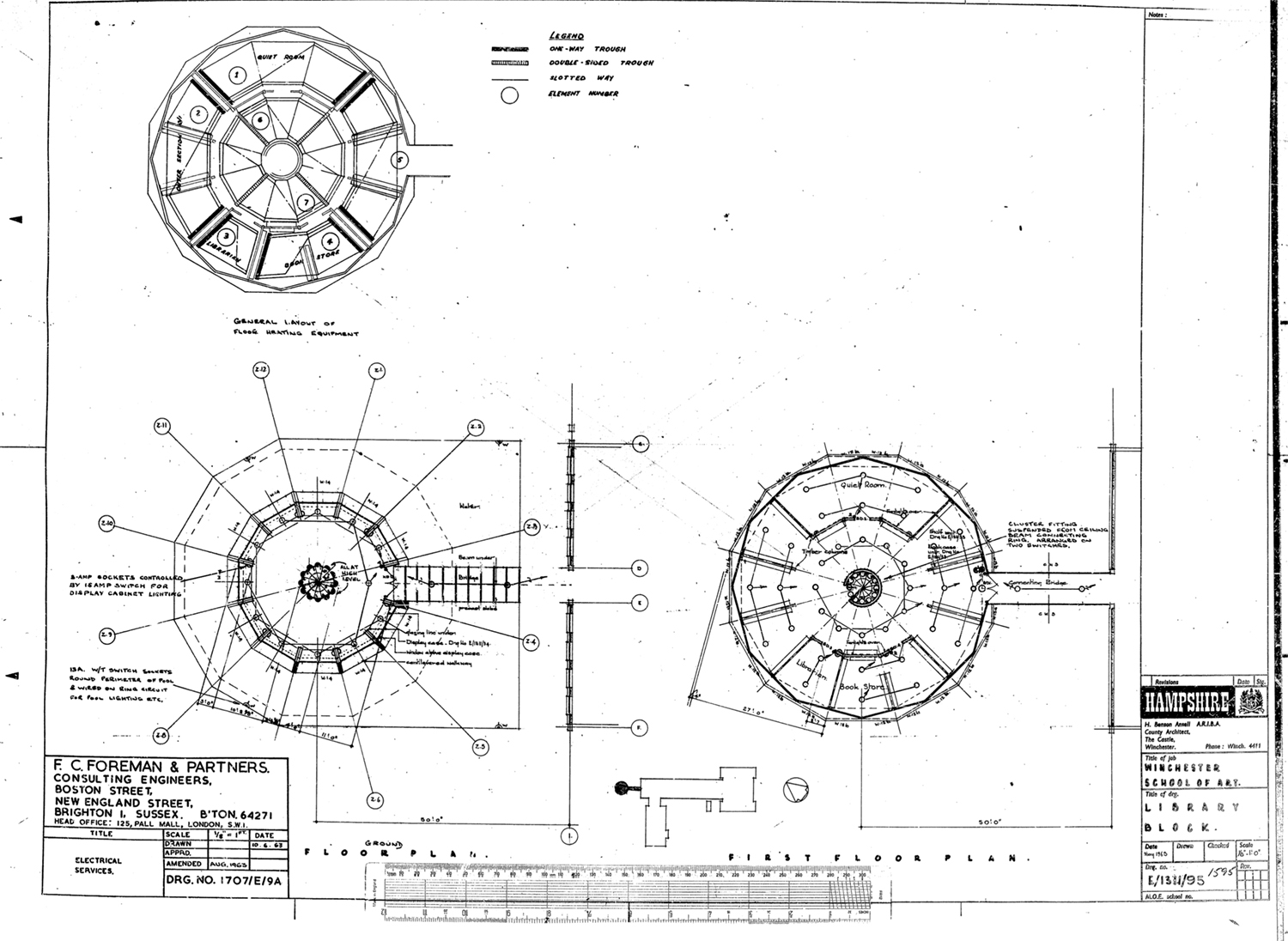
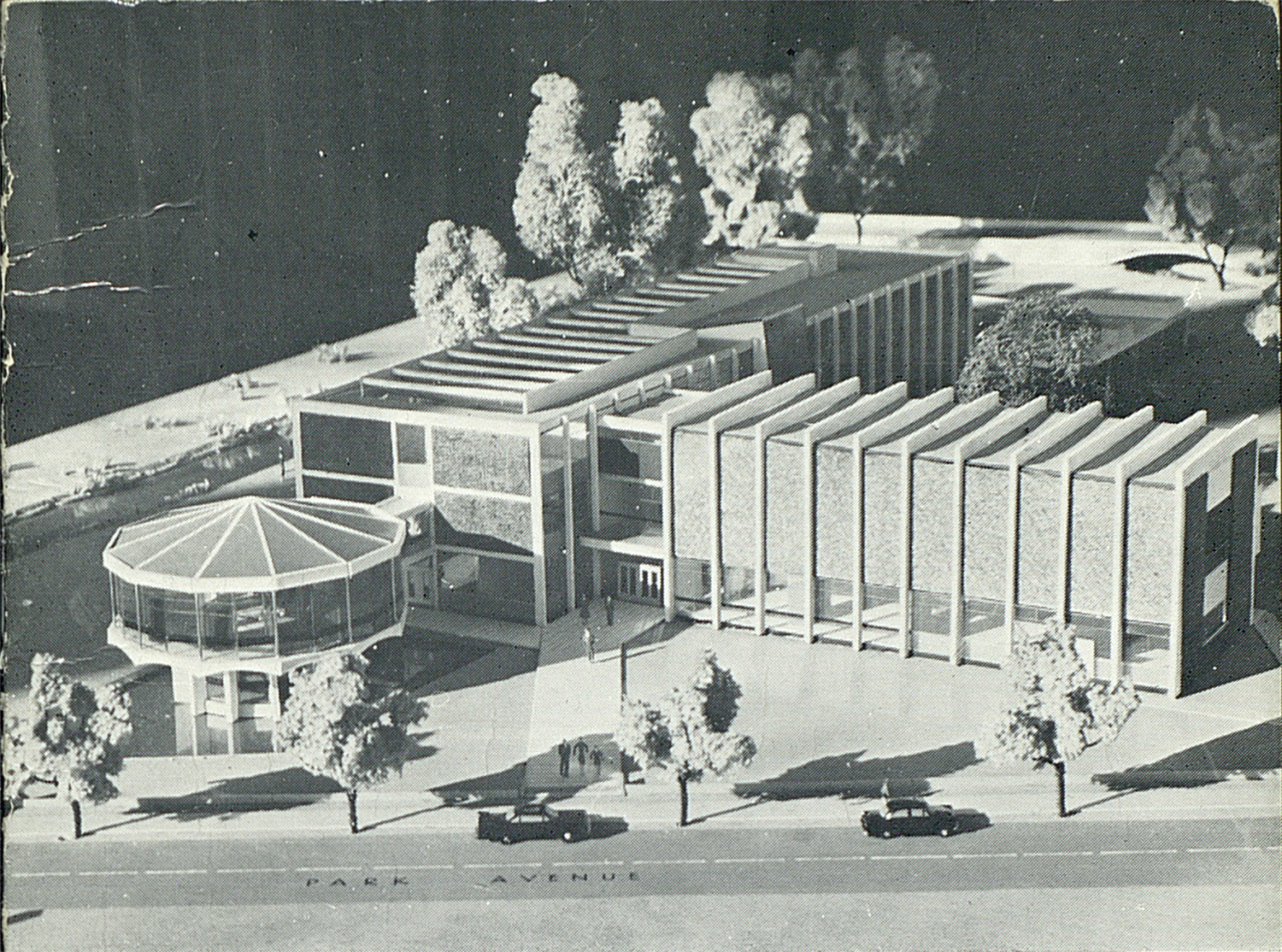
Architectural plans of WSA’s new campus at Park Avenue, the Rotunda building, and architectural model, all produced in 1963
The new campus was initially advertised in the 1965 prospectus as to be completed in the autumn of that year, though delays would mean the opening of new buildings and courses subsequently commencing in 1966. Courses at this time included Foundation Art, Fine Art, Printed and Woven Textiles, Dress Workroom, History of Art and Complementary Studies, Painting and Decorating, and Music. The total cost per year for an ‘Advanced Level’ course at WSA in 1966 was £60.

WSA Prospectus 1967, featuring photography of new campus buildings at Park Avenue
Over the next 30 years, the School would grow a portfolio of courses and collaborative output with colleagues and institutions in Europe and internationally. In 1994, the School’s ambition to grow manifested in its approach to the University of Southampton. Two years of negotiation and planning would follow, and the School would announce its joining the University on the 1 August 1996 with the addition of a flyer to the 1996 prospectus.

Flyer added to the 1996 prospectus announcing the merger of WSA into the University of Southampton
In 1999, the Park Avenue campus would be transformed with the addition of three new major buildings, designed by local architects APLB, and campus-wide modification and upgrades to existing buildings and infrastructure. These new buildings afforded the School a much-increased student capacity and better provision and facilities for a range of art and design education.
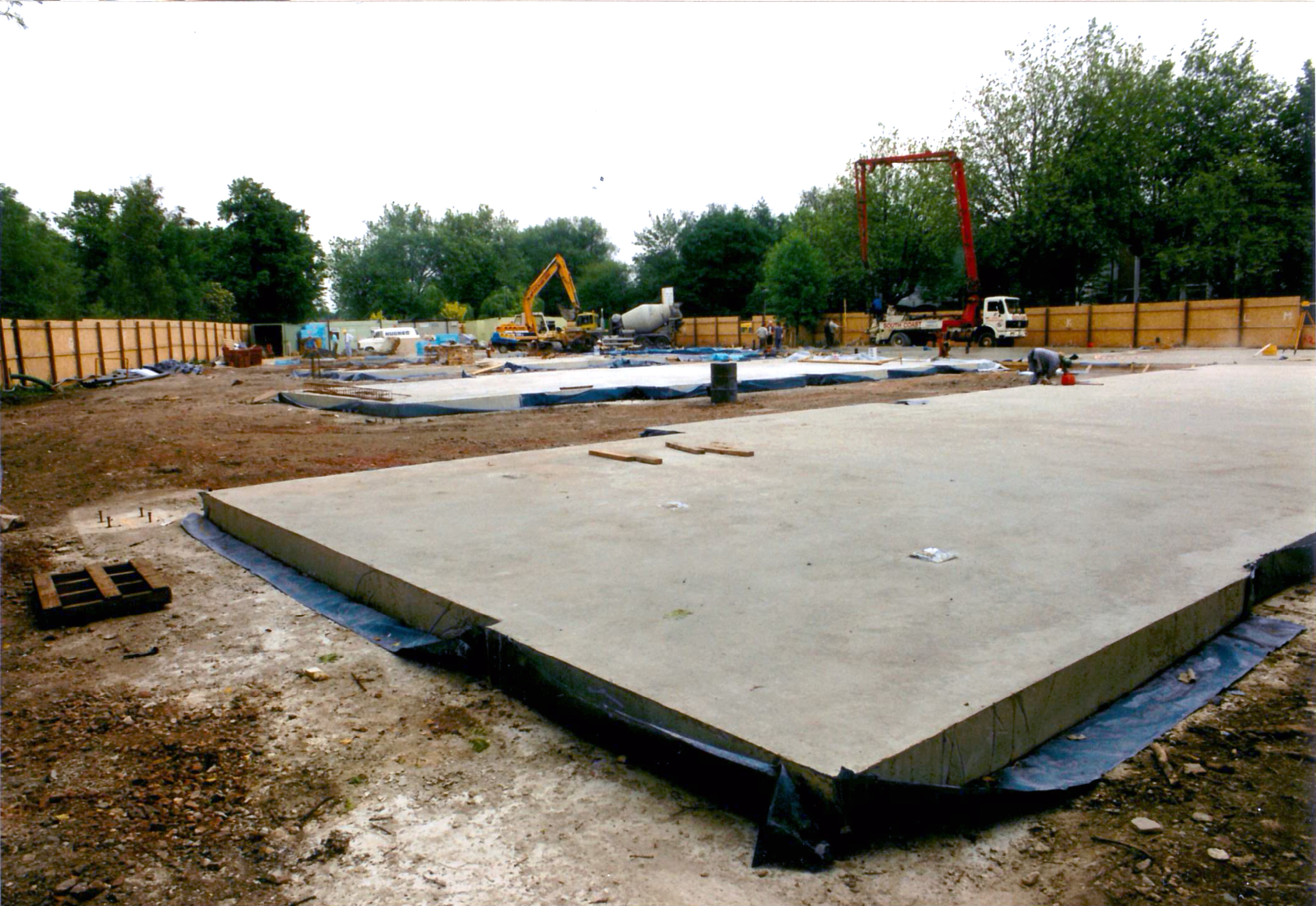


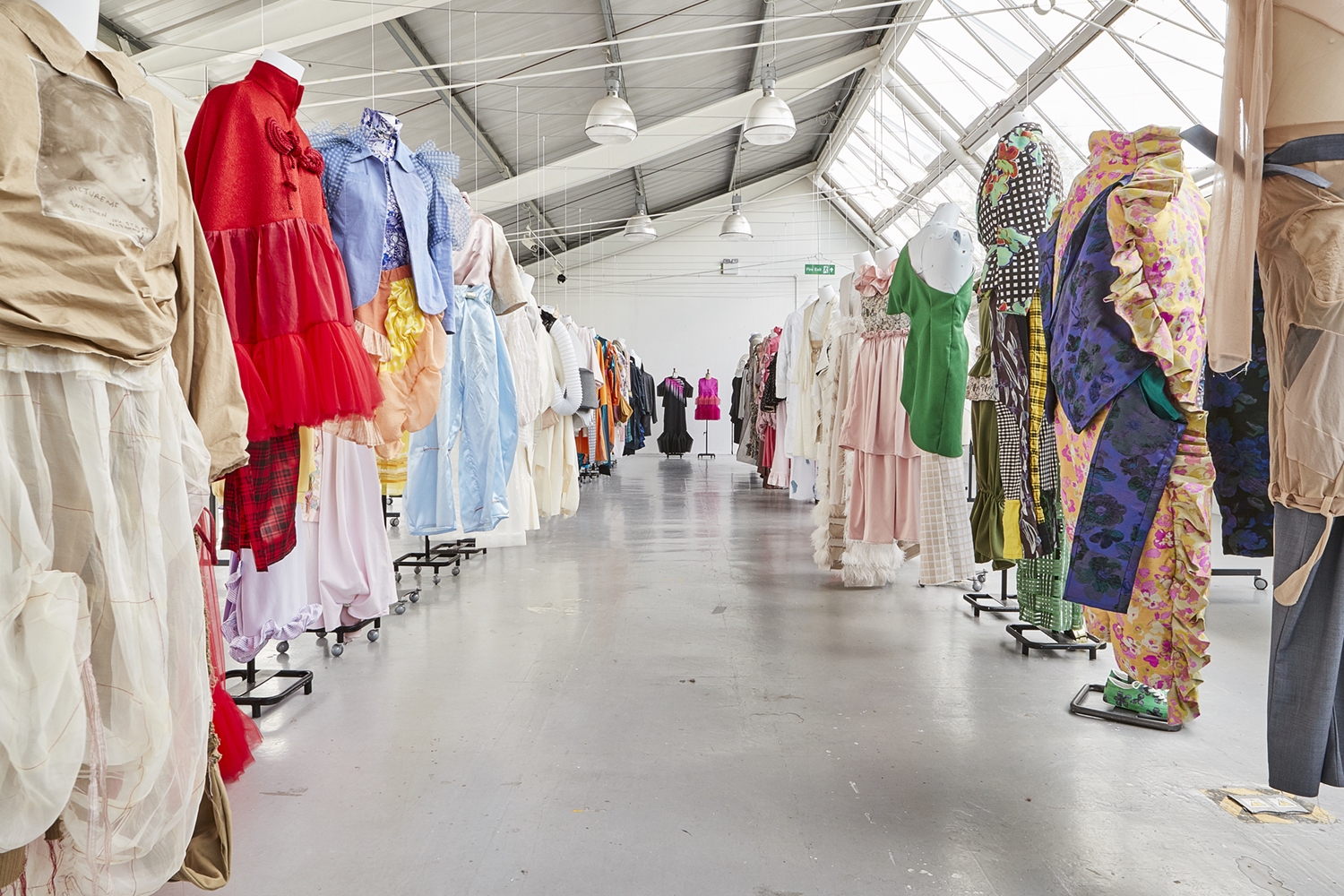
Construction of the new buildings at Park Avenue in 1996, the completed buildings, and interior during the BA Degree Show
150 years since our founding, Winchester School of Art now welcomes an annual student cohort of 1,800+ students, both to Winchester and our shared collaborative campus in Dalian, China. We offer six undergraduate programmes, 11 postgraduate taught programmes, and a postgraduate research programme supported by five research groups.
Many alumni have gone on to achieve great success and international acclaim after their time at the School. Big names in the art world and beyond include: model Stella Tennant; Designers Guild founder Tricia Guild; musician Brian Eno; Turner Prize nominee Darren Almond; Jerwood Painting Prize winner Katie Pratt; and award-winning illustrator Christian Ward.
Did you study at Winchester School of Art? We want to hear from our alumni during our 150th anniversary! Whether you’ve a particularly fond memory or experience, interesting story, or photos from your time with us at the School, share them with us on social media using the hashtag #wsa150. And for more information, please contact wsa150@southampton.ac.uk



